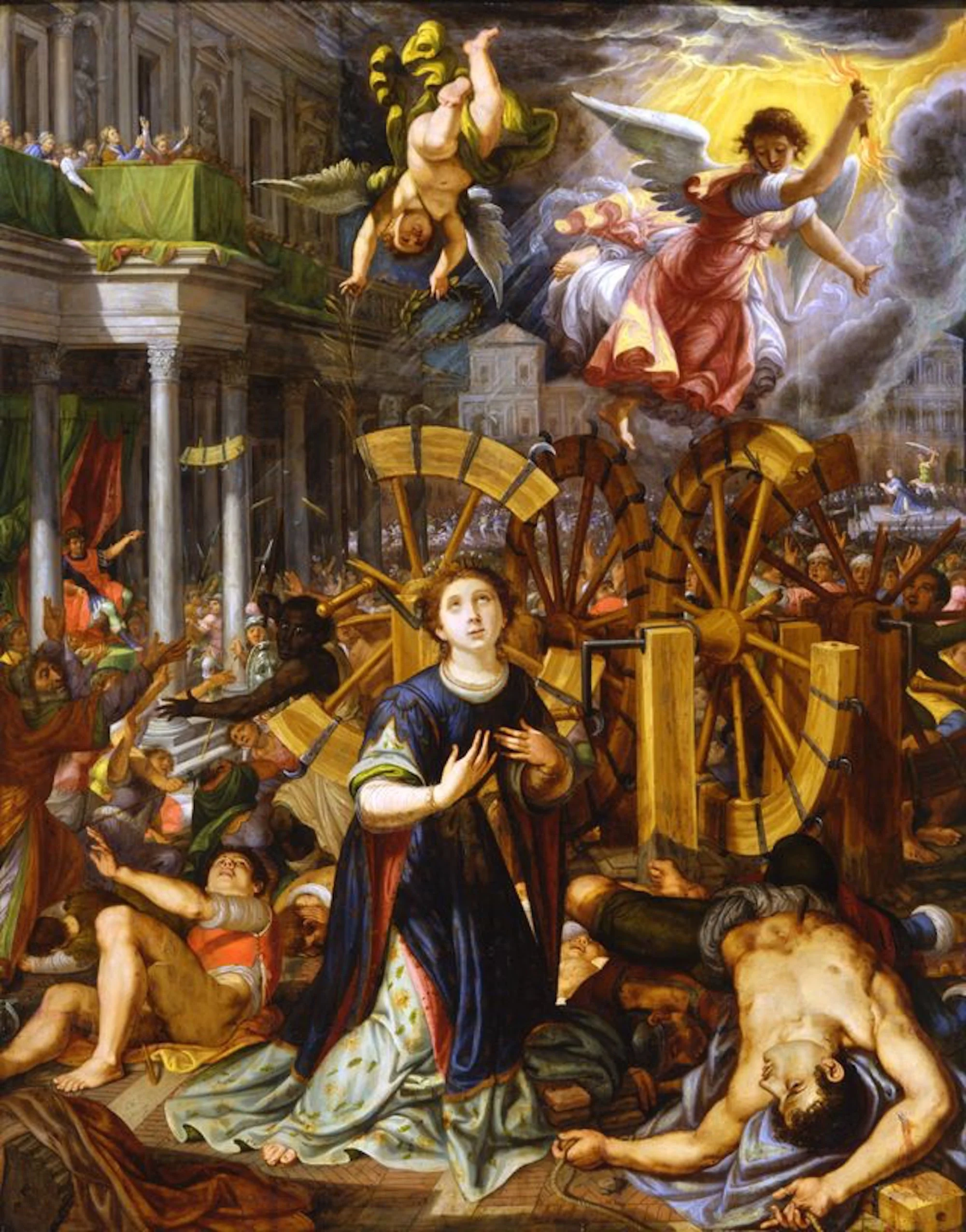PIETRO DE LIGNIS (Mechelen 1577 – Rome 1627)
The Martyrdom of Saint Catherine of Alexandria
oil on copper
26 ½ x 20 ½ inches (67.4 X 50.2 cm.)
PROVENANCE
Anonymous sale, Christie’s, New York, April 6, 1989, lot 149, illustrated (as Circle of Adam Elsheimer)
Lawrence Steigrad Fine Arts, New York, 2006
Private Collection, Switzerland, 2006
Otto Naumann Ltd., New York, by 2009
Private Collection, Connecticut until the present time
LITERATURE
Staatliche Kunsthalle Karlsruhe, Neuerwerbungen für die Gemäldegalerie, 1984 – 1994, Karlsruhe, Die Kunsthalle, 1995, p. 58
Portraits and Other Recent Acquisitions, Lawrence Steigrad Fine Arts, New York, 2006, no.2, illustrated
Pietro de Lignis (also known as Pieter van den Vandenauta, Pietro Dubois, Pieter van den Houte, Pieter du Bois, Pieter van den Hout, Pieter Dubois, and Pietro del Legro), was born in Mechelen and also lived in Antwerp coming from a family of painters and stained glass artists. He later was active in Rome from 1599 – 1627. In 1607 he became a member of the Accademia di San Luca. In 1607 he married Dorothea Tempolini and lived at the Via della Croce. He was in close contact with Adam Elsheimer, and from 1609-1610 lived on the Via del Babuino where Elsheimer also resided. Their son Angelo de Lignis was as well a painter and member of the Accademia di San Luca. De Lignis appears to have specialized in religious works of medium size mainly executed on copper. His art represents a fluid blending of Northern Mannerism with the contemporary painters of Rome and Bologna.[1]
Paintings depicting Catherine’s martyrdom are in general comparatively rare, the depiction of the mystic marriage being more commonplace. According to The Golden Legend, Catherine of Alexandria was a fourth century queen who converted to Christianity. She was baptized by a desert hermit and in a vision underwent a mystic marriage with Christ. In our painting the steps leading up to the martyrdom are painted somewhat sequentially, with the most important action placed in the foreground. The martyrdom is believed to have taken place in 307 A.D. When visiting Alexandria the Roman Emperor Maxentius, shown enthroned under a canopy on the left side of the middle ground, desired Catherine and tried to undermine her faith by argument. After failing, he sent fifty philosophers to plead his case, but Catherine persuaded them instead to become converts. An enraged Maxentius had the philosophers executed, depicted in the middle background of the panel. For Catherine’s execution the emperor created an instrument of torture consisting of four wheels studded with iron spikes to which she was bound. She is saved when an angel appears hurling thunderbolts. The wheel is broken and those that bound her destroyed. The Empress Valeria Maximilla, who was converted by Catherine, sits on the balcony of the palace along with her ladies in waiting witnessing the miracle. Maxentius, in his frustration, has Catherine beheaded, pictured in the upper right background. Yet Catherine stands unvanquished in the center foreground of the composition with her eyes heavenward, wearing a crown while another angel hovers above displaying the symbols of her passion, the martyr’s palm and laurel wreath.[2]
The most in-depth discussion of De Lignis’ painting of The Martyrdom of Saint Catherine of Alexandria was published in 1995 in the Neuerwerbungen für die Gemäldegalerie, 1984 – 1994 by the Staatliche Kunsthalle Karlsruhe. They list four known versions of this composition and do not regard theirs as the prime version. In chronological order they are as follows:
1) The earliest known version is on copper, measuring 68 x 51.5 cm. It was last sold at Sotheby’s London on May 25, 1988, lot 126. Its present whereabouts are unknown.
2) Next is our painting which the museum believes to have been painted prior to theirs before 1610.
3) This is followed by the painting in the museum in Karlsruhe which they date from 1610 / 1620. Of similar size at 67.1 x 51.8 cm., it is on copper and signed in the top left on the architrave of the portico: Pietro du Bois. ALIAS.DI/LIGNIS. IN ROMA.
4) The National Gallery, Prague owns a fourth version of this scene which has been attributed to Johann König, on copper, measuring 70 x 48 cm.[3]
As De Lignis’ known oeuvre is quite small the survival of three versions of this composition, as well as the copy in Prague, points to the popularity and probable fame of this image at the time.[4] This would hardly be surprising as on its shimmering surface a cast of hundreds are incorporated as backdrop to the high drama of the foreground that depicts a scene of indelible strength and fortitude.
[1] Biographical information taken from Staatliche Kunsthalle Karlsruhe, op.cit., pp. 57-58; and “Pietro de Lignis“ on rkd.nl (RKD Explore) website.
[2] The Golden Legend or Lives of the Saints was compiled by Jacobus de Voragine, Archbishop of Genoa in 1275; and Staatliche Kunsthalle Karlsruhe, op.cit., pp. 57-58.
[3] Staatliche Kunsthalle Karlsruhe, 58.
[4] Ibid, p. 58.
